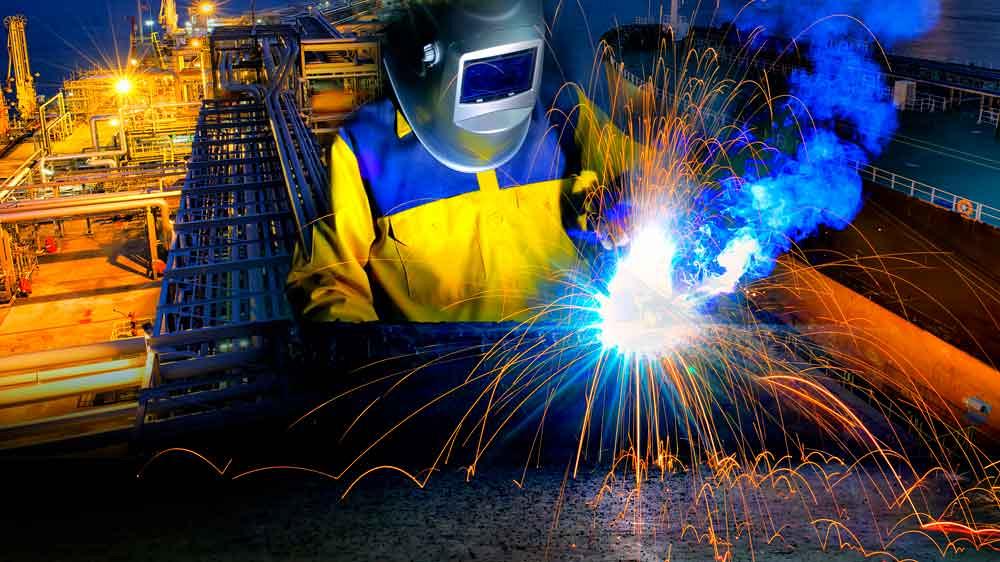Welding plays a pivotal role in the fabrication of structures across various industries, influencing their strength, durability, and overall quality. This article delves into the effects of different welding methods on the structural integrity of constructions, highlighting their impact on strength, durability, and reliability.
Understanding Welding Methods and Their Effects
Welding methods vary widely in their approach and application, each imparting unique characteristics to welded joints. The choice of welding technique can significantly affect the structural performance of a construction.
- Arc Welding Techniques
- Shielded Metal Arc Welding (SMAW): Commonly known as stick welding, SMAW provides robust welds suitable for outdoor and rough environments. However, its slower deposition rate may affect productivity.
- Obloukové svařování plynem (GMAW/MIG): GMAW offers high productivity with a continuous wire feed and gas shielding. It produces clean welds suitable for automotive and structural applications.
- Svařování pod tavidlem (FCAW): FCAW is versatile, capable of welding thick materials and working in windy conditions due to its flux shielding. It provides high deposition rates but requires careful control to avoid slag inclusion.
- Obloukové svařování v plynovém wolframu (GTAW/TIG)
- GTAW/TIG is renowned for producing high-quality welds with excellent aesthetic appeal and minimal spatter. It is suitable for thin materials and critical applications where precision and control are paramount.
Impact on Strength and Durability
- Heat Affected Zone (HAZ)
- The heat generated during welding affects the surrounding material, creating the HAZ. Rapid heating and cooling cycles can lead to residual stresses, affecting material properties like hardness and toughness.
- Techniques like preheating and post-weld heat treatment (PWHT) help mitigate these effects, improving the overall integrity of welded joints.
- Metallurgical Changes
- Welding alters the microstructure of metals, potentially affecting their mechanical properties such as tensile strength, fatigue resistance, and corrosion resistance.
- Proper welding procedures and material selection are critical to maintain or enhance these properties, ensuring the longevity of the structure under operational conditions.
- Weld Defects and Quality Assurance
- Weld defects such as porosity, cracks, and incomplete fusion can compromise structural integrity. Stringent quality control measures, including visual inspection, non-destructive testing (NDT), and ultrasonic testing, are essential to detect and mitigate defects.
Considerations for Specific Applications
- Structural Steel
- Steel structures require robust welds to withstand dynamic loads and environmental conditions. Proper weld design and inspection ensure compliance with industry standards and codes.
- Aluminum and Titanium
- Aluminum and titanium alloys present challenges due to their high thermal conductivity and reactivity. Specialized welding techniques and filler materials are necessary to prevent defects and maintain mechanical properties.
Innovations in Welding Technology
- Automatizace a robotika
- Automated welding systems offer precision, repeatability, and enhanced productivity. Robots can perform complex welds with minimal human intervention, ensuring consistency and quality in large-scale production.
- Advanced Materials and Techniques
- Advances in filler materials, shielding gases, and welding equipment contribute to improved weld quality and structural performance. High-strength alloys and innovative welding processes expand possibilities in design and construction.
Závěr
Welding profoundly influences the quality and durability of structures, from buildings and bridges to industrial machinery and aerospace components. By understanding the effects of welding methods on material properties, engineers and fabricators can optimize designs, select appropriate welding techniques, and implement quality assurance measures to ensure the structural integrity and longevity of constructions. Embracing technological advancements and best practices in welding enhances reliability, safety, and performance, paving the way for sustainable and resilient infrastructure across diverse sectors.

